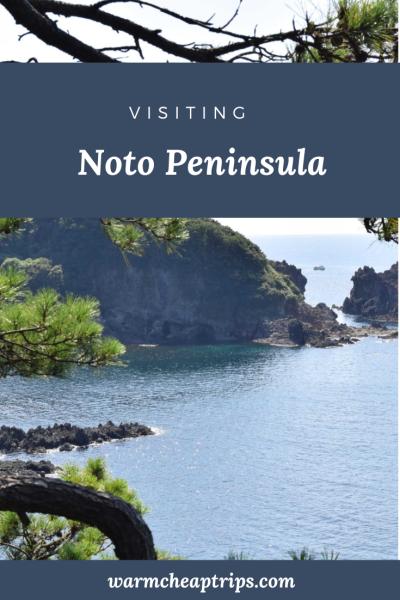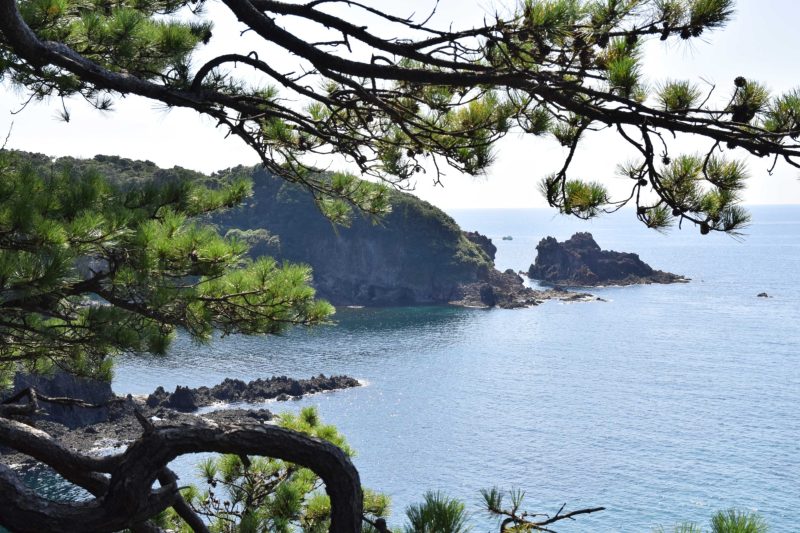The beginning of 2024 didn’t unfold on an auspicious note in Japan, marked by the devastating earthquake that struck Noto Peninsula on January 1. This beautiful region, located north of Kanazawa, had been part of my itinerary the previous year during a 4-day journey intertwined with this city.
Unfortunately, the current situation remains quite dire, with many buildings collapsed, roads destroyed, and unfortunately, several casualties. According to optimistic forecasts, it may not be possible to revisit this corner of Japan before summer. I sincerely hope to return then and contribute to the local economy and recovery efforts.
Noto Peninsula, with its natural beauty and the simplicity of its villages and residents, is recommended for those who love slow travel and connecting with local realities. Seeing it wounded, knowing that things I witnessed no longer exist, and realizing that people I met have lost their homes is truly heart-wrenching. Particularly Wajima, a city I had the pleasure of exploring guided by the local tourism board, suffered severe damage, including a significant fire following the earthquake.
Introducing a story about a land affected by a seismic event is a delicate task, but the region needs to be portrayed with the hope of inspiring you to visit on a future trip to Japan.
What to See & do in Noto Peninsula
Noto Peninsula is situated on the western coast of Japan, extending north from Kanazawa. It is a GIAHS area, in short, a kind of Unesco Heritage of Agriculture. The unique blend of traditional agricultural and fishing methods, the transmission of local craftsmanship techniques, natural beauty, biodiversity from the specific climate, and the strength of local communities and traditional festivals led to its inclusion in the list as an agricultural system of importance to humanity.
As you can imagine, this special mix easily found its way into my heart. Despite being historically less affluent than neighboring Kanazawa and Kaga Onsen, which thrived thanks to the samurai, Noto Peninsula is rich in nature and beauty. It provided quality salt and rice, allowing it to shine alongside other areas in the ancient Kaga region, one of the most flourishing regions of ancient Japan.
For a visit to Noto Peninsula, at least a couple of days are needed. If you have the opportunity to spend at least two nights, you’ll have the chance to delve deeper into local traditions and connect more with the local communities.


DISCLAIMER: At the time of writing this article, Noto Peninsula is not accessible. The article is crafted as inspiration for future travel to help the local economy and is based on the situation before the earthquake. Some activities may not be restored, and I will update the content once the reopening of the area is discussed. Meanwhile, donations can be made to support evacuees and reconstruction through the Rakuten Clutch Special Charity Fund, active until February 5 (may be extended), accepting foreign card payments but requires registration on Rakuten. Another trustful website is the Nippon Foundation, accepting donations for Noto Peninsula until March 2024 (may be extended). Unfortunately, most other sites require residency in Japan to proceed.
Chirihama Beach Driveway
The railway network is not particularly developed and reaches only Nanao, where the Wakura Onsen hot spring resort is located. Buses connect Kanazawa and Wajima but are not very frequent. Renting a car is undoubtedly the best way to explore Noto Peninsula, allowing you to experience the unique opportunity of driving on Chirihama Beach!
Yes, along this 8km beach facing the Sea of Japan, you can drive just like on an ordinary road—except, of course, that you’re on a beach, with waves gliding beside you. The sand is super compact, preventing sinking, giving you the chance to have a truly unique and exciting experience, especially at sunset.
There are several access points, and there’s no toll. During the summer season, there are often food stalls and people collecting seashells on the shore. Still, access is blocked on stormy days or when the sea is particularly rough. You can check its opening status on this website (in Japanese, use an automatic translator).


Noto Kongo Coast
Continuing along the western coast, the compact beach gives way to a rugged coastline, characterized by rocks shaped over time by the erosion of the sea and winds. A breathtaking landscape, with the most scenic point being Ganmon Rock, a large rock with a hole 6 meters wide and 15 meters high eroded by the sea. Legend has it that Minamoto no Yushitsune hid here while fleeing from his brother during the Kamakura period. It’s possible to walk down to the cave, and from March to November, you also have the chance to take a boat tour around this rock formation and other highlights of the Kongo coast.
Continuing by car, you’ll also see Totoro Rock, shaped like a giant Totoro, and the “married rocks” of Hatago Iwa, also called Noto Futami because they indeed resemble the more famous Meoto Iwa of Futami in the Mie Prefecture.
Wajima, the Main Center of Noto Peninsula
Wajima is the largest city in the area, but the atmosphere is that of a quiet rural town overlooking the sea, where you can buy fresh fish every morning at the local market.
Known for its precious lacquerware, Wajima is also the hometown of Go Nagai (the creator of Mazinger), and it hosts the museum that houses the impressive floats of the Kiriko Matsuri that light up the summer weekends of Noto Peninsula.
Just outside the center are the spectacular Shiroyone Senmaida rice terraces and a marine salt production center where you can learn about the production process. There’s another article entirely dedicated to Wajima, which you can read by clicking here.


Suzu Salt Village
Besides Wajima, Suzu also produces sea salt, and here you’ll find a kind of small museum to delve into the traditional Agehama technique of extracting salt from seawater, with a history of 500 years. In the summer, it’s also possible to participate in the production process, while throughout the year, you can taste various salty products with the sea salt produced here. It should also be possible to experience a homestay, hosted by families working in salt production. I didn’t have the chance to do this experience last time, but it’s certainly something I want to do on my next visit.
Wakura Onsen
Located at the base of the eastern coast of Noto Peninsula, Wakura Onsen is a hot spring resort that benefited from Japan’s bubble economy years, often chosen as a destination for business trips organized by Japanese companies for their employees.
Of those times, now remain the huge hotel-ryokans, clustered on the coast, allowing you to admire the sea from your room and hot springs. We stayed at Ryokan Biwanso and found truly superb hospitality, even more than commonly found in ryokans, delicious food, and even the karaoke room bookable in the facility. The room was also very beautiful, overlooking the sea and super relaxing, but I note that outside the facilities, the town is practically deserted.
However, for those who want to enjoy hot springs with a sea view, almost all accommodations also offer the possibility of accessing the baths by paying the daily ticket, without the need to stay overnight.


Noto Kiriko Festival, Summer Matsuri of Noto Peninsula
During the summer weekends, the towns of Noto Peninsula fill with magic thanks to various Kiriko Matsuri, where huge lantern floats are richly decorated and paraded through the streets of the towns. These floats are impressive, the result of craftsmanship, and can be admired throughout the year at the Kiriko Hall in Wajima.
The various Kiriko Festivals happen every weekend from July to September: in some areas, the lantern floats are transported at sea, in others, wild dances take place, others are accompanied by fire and straw pillars that are burned… It’s something more ancestral, linked to rural traditions and the sense of community, going beyond the typical matsuri found in cities like Tokyo. A unique experience during which you can fully experience the sense of community in this area.
I hope to have the opportunity next summer to attend and will certainly tell you about it, especially on my Instagram channel.


While Noto Peninsula is currently wounded, the desire to return is fueled by the hope of renewal. The hope is that we can soon return to explore this area rich in culture, traditions, and beautiful landscapes, contributing to the rejuvenation of a place that holds a special place in my heart. In the meantime, if you want to contribute to helping evacuees and reconstruction, you can make a donation to the Rakuten Clutch Special Charity Fund or Nippon Foundation.
Did you find this article useful? Buy me a coffee 🙂





